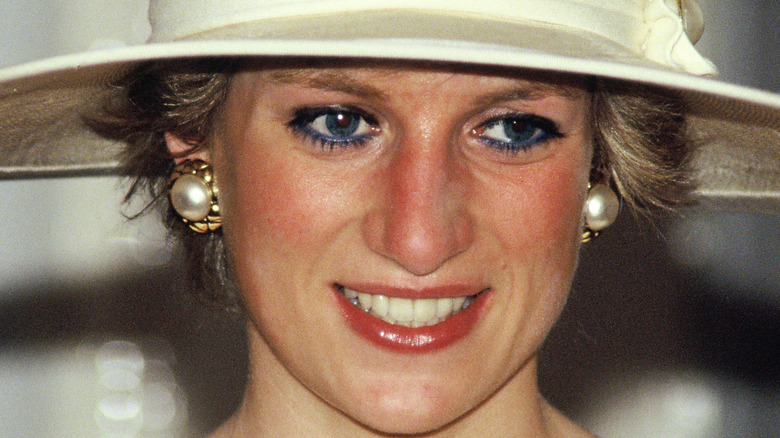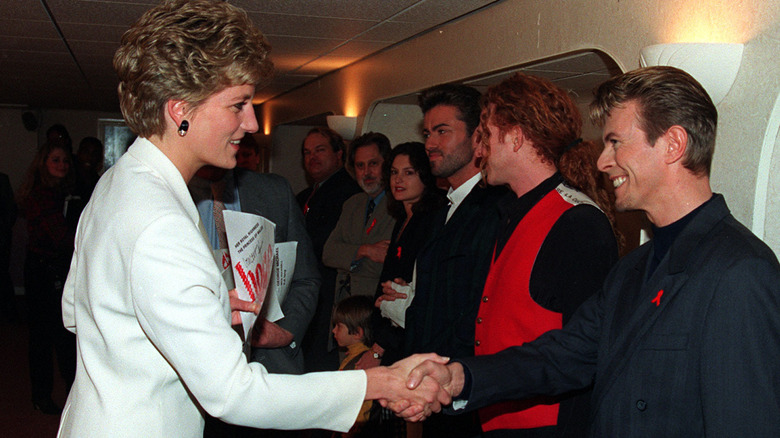How Princess Diana Became An LGBTQ+ Icon
When people think about the late Princess of Wales, they often contemplate the tragic things about Princess Diana. They think about her tumultuous marriage that led to a devastating divorce, or they focus on her 1997 car accident death in Paris. But Diana was more than the bad things that happened to her. She was a mom who had relatable parenting problems with William and Harry, and above all else, she was a person. She was multidimensional, which gets lost in the public's eyes when you marry into royalty.
Because she didn't come from royalty, Diana was down to earth, and she supported people from all walks of life. Of note is her support of the LGBTQ+ community for whom she showed public support many times. She was a free spirit and aligned herself with like-minded individuals. In fact, she was friends with Freddie Mercury, who snuck the late princess into a gay club in the '80s (via Biography). The best part? They didn't even get caught!
"Go on, let the girl have some fun," Mercury said of Diana that night, and the princess needed no more coaxing than that. Diana always wanted to have fun, which is why she inevitably butted heads with the royal family so much — and why her life changed after divorcing Prince Charles. But just what is it about her that's made her the queer icon she is today?
Diana became a beacon of hope for an entire community
The queer fascination with Princess Diana is rooted in her own fascination of the LGBTQ+ community. According to CheatSheet, Diana "really liked gay guys," and this led her to working out at a gay gym. "She really felt at ease with gay men. She could relate to them and she didn't feel threatened by them in any way. They were just friends she could hang out with," said Jeremy Norman, owner of the gym.
Moreover, Diana was a leading public figure in the '80s and '90s for supporting HIV/AIDS patients. She combatted negative public perception of gay men and the virus, instead visiting AIDS patients in the '80s and shaking their hands (via Insider). These were the people with whom she felt most comfortable, after all, and she didn't appreciate the negative public perception of them. Her goal? To prove that there was nothing wrong with or gross about patients of the disease.
On an even smaller yet grander level, the LGBTQ+ community related to Diana because she was an outcast. She wasn't a royal yet married into the family; she was different yet never compromised herself (via Harper's Bazaar). This is no doubt why she found solace in hanging out with gay men: they understood her when no one else did. While she wasn't queer sexually or romantically, she felt the pressure of being different in a huge way. Perhaps them. puts it best: Diana, like LGBTQ+ individuals, had to find joy where there was none in order to survive. Without joy, the bleakness of life becomes too overbearing.
Surely, if Diana could find happiness, LGBTQ+ people can too, right?

